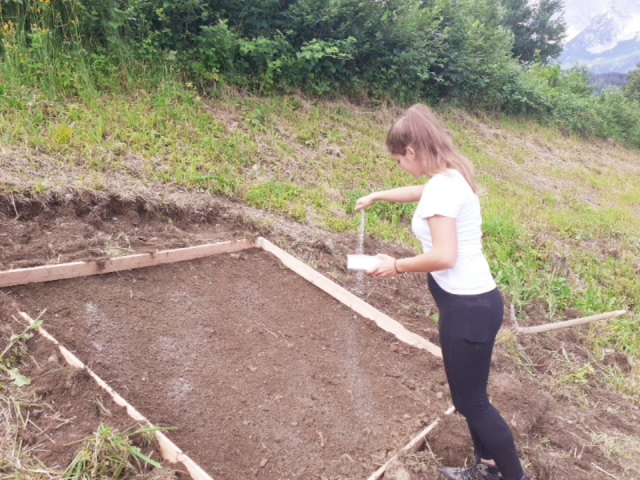In July, the 2Lw class, under the guidance of Verena Mayer and Renate Mayer from the Acquisition Department, with the support of research intern Philipp Poier, created three flowering areas of four square meters each as part of a practical day in Gumpenstein. The students were taught the important steps for creating flowering areas on different slopes:
- The upper layer of vegetation is removed.
- The soil is loosened up slightly and distributed evenly with a rake.
- The seeds of the Gumpensteiner Wildflower Mix BW3 are carefully weighed and mixed with wheat semolina in a mixing ratio of 1:10 to achieve optimal distribution of the seeds. Three grams of the flowering mixture and thirty grams of wheat semolina are used per square meter.
- The seeds are spread on the area.
- In the final step, the seeds are pressed well into the ground using a hand roller.
In order to achieve better stability and to separate the flowering area from the rest of the vegetation, larch wood frames are used, which students also made.
In the first week of school of the 2020/21 school year, the flowering areas were finally cleared of emerging grasses by students from the 1U class. This step is necessary because otherwise less competitive wildflowers would be displaced by the grasses.








